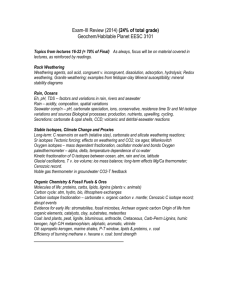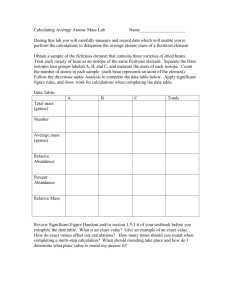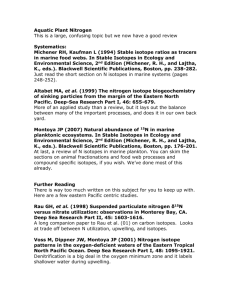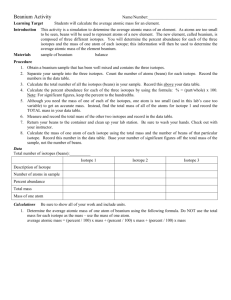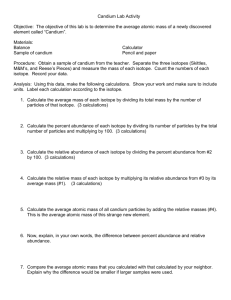CALCULATING THE ATOMIC MASS OF VEGIUM
advertisement
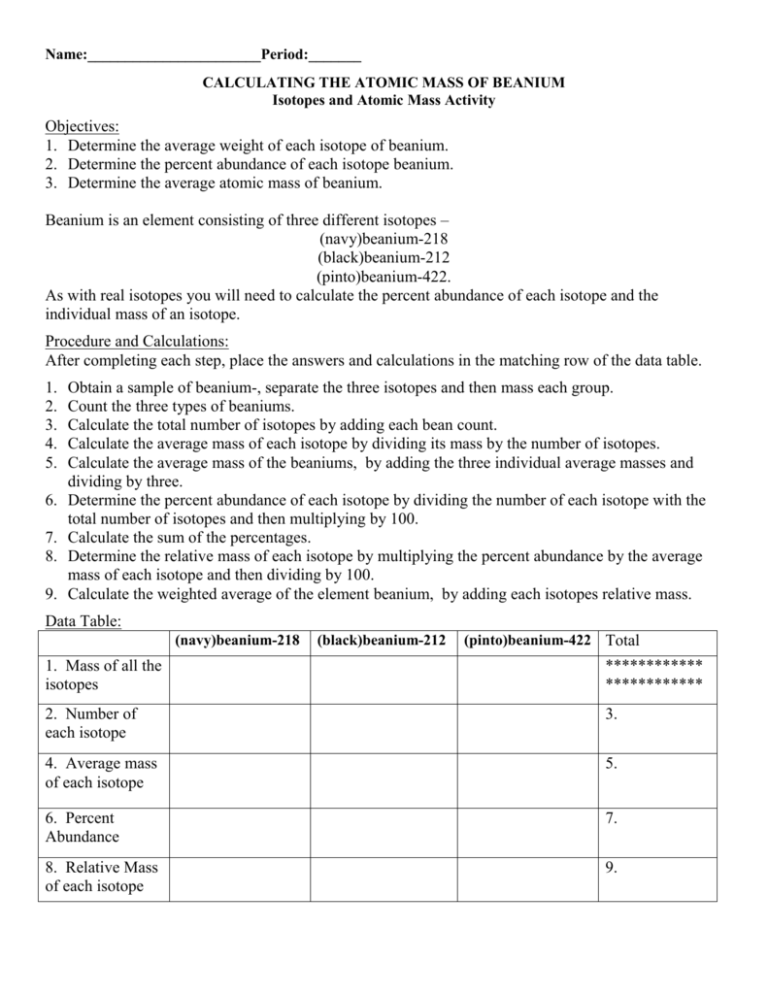
Name:_______________________Period:_______ CALCULATING THE ATOMIC MASS OF BEANIUM Isotopes and Atomic Mass Activity Objectives: 1. Determine the average weight of each isotope of beanium. 2. Determine the percent abundance of each isotope beanium. 3. Determine the average atomic mass of beanium. Beanium is an element consisting of three different isotopes – (navy)beanium-218 (black)beanium-212 (pinto)beanium-422. As with real isotopes you will need to calculate the percent abundance of each isotope and the individual mass of an isotope. Procedure and Calculations: After completing each step, place the answers and calculations in the matching row of the data table. 1. 2. 3. 4. 5. 6. 7. 8. 9. Obtain a sample of beanium-, separate the three isotopes and then mass each group. Count the three types of beaniums. Calculate the total number of isotopes by adding each bean count. Calculate the average mass of each isotope by dividing its mass by the number of isotopes. Calculate the average mass of the beaniums, by adding the three individual average masses and dividing by three. Determine the percent abundance of each isotope by dividing the number of each isotope with the total number of isotopes and then multiplying by 100. Calculate the sum of the percentages. Determine the relative mass of each isotope by multiplying the percent abundance by the average mass of each isotope and then dividing by 100. Calculate the weighted average of the element beanium, by adding each isotopes relative mass. Data Table: (navy)beanium-218 (black)beanium-212 (pinto)beanium-422 Total 1. Mass of all the isotopes ************ ************ 2. Number of each isotope 3. 4. Average mass of each isotope 5. 6. Percent Abundance 7. 8. Relative Mass of each isotope 9. Questions for Analysis: 1. Which beanium isotope is the most abundant and which is the least abundant? 2. Beanium 422 is much heavier than the other two isotopes. Why is the average not closer to the mass of beanium 422? 3. Why can’t you just add the mass of each isotope, then divide by three to find the average? In other words, why is box 5 not a good average for this lab? 4. What is the atomic mass of this imaginary element beanium? Explain why. 5. What are the mass numbers of the three isotopes. 6. If beanium were a real element, what would be the same and what would be different about the three isotopes. 7. How did your instructor decide to name each isotope? (where did they get the numbers?) 8. Why is calculating atomic mass using weighted averages better than just calculating averages?





